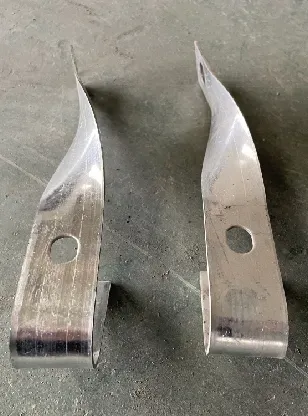loading...
- No. 9, Xingyuan South Street, Dongwaihuan Road, Zaoqiang County, Hengshui, Hebei, China
- admin@zjcomposites.com
- +86 15097380338
- Welcome to visit our website!
Innovative Applications of FRP Materials in Steel Structural Engineering Design
The Integration of FRP in Steel Structures A Revolutionary Approach
In the realm of modern engineering and construction, the incorporation of innovative materials has become paramount. Among these materials, Fiber Reinforced Polymer (FRP) has emerged as a game-changer, particularly when used in conjunction with traditional steel structures. This article explores the benefits, applications, and future prospects of integrating FRP into steel construction.
Understanding FRP
Fiber Reinforced Polymer (FRP) is a composite material made of a polymer matrix reinforced with fibers, typically glass, carbon, or aramid. This combination endows FRP with exceptional qualities such as high strength-to-weight ratio, corrosion resistance, and durability. These properties make FRP an appealing alternative to conventional building materials, especially in harsh environments where steel may corrode or degrade over time.
The Benefits of Using FRP in Steel Structures
1. Enhanced Durability One of the most significant advantages of FRP is its resistance to moisture, chemicals, and UV radiation. When integrated with steel structures, FRP can protect the steel from corrosion, extending the lifecycle of the structure significantly. This durability reduces maintenance costs and increases the overall reliability of the construction.
2. Weight Reduction FRP is significantly lighter than steel, which makes it easier to handle and install. This weight reduction can lead to savings in transportation costs and can also reduce the load on the foundation, potentially allowing for smaller and more economical footing systems. Engineers can also design lighter structures that are easier to assemble.
3. Flexibility in Design The versatility of FRP allows for innovative designs that might be challenging with traditional materials. Its adaptability enables architects and engineers to push the boundaries of conventional construction, creating unique shapes and configurations that are aesthetically pleasing while remaining structurally sound.
4. Enhanced Performance The high tensile strength of FRP enhances the load-bearing capabilities of steel structures. By reinforcing steel components with FRP, engineers can improve the overall performance of the structure, especially under dynamic loads such as wind and seismic activities. This is particularly important in areas prone to natural disasters.
frp steel structure

Applications of FRP in Steel Structures
FRP is being used in various applications within steel construction. Bridges, for instance, benefit greatly from the lightweight and durable nature of FRP. Many modern bridge designs incorporate FRP elements to reduce the overall weight while maintaining structural integrity.
In high-rise buildings, FRP can be used to reinforce steel columns and beams, enhancing the building's ability to resist lateral forces. FRP sheets are often applied to existing steel structures to improve their strength and extend their lifespan without the need for major refurbishments.
Furthermore, infrastructure projects such as highways and railways are increasingly incorporating FRP materials into guardrails and supports, showcasing the versatility and reliability of this technology.
Future Prospects
As the construction industry continues to evolve, the demand for sustainable and resilient building materials will increase. The combination of FRP and steel structures provides a forward-thinking solution that aligns with this trend. Ongoing research is focused on optimizing FRP materials, improving performance, and reducing costs, making it accessible for broader applications.
Moreover, advancements in manufacturing techniques, such as 3D printing of FRP components, may revolutionize how structures are designed and built. This could lead to more efficient construction processes, minimizing waste and promoting sustainability.
In conclusion, the integration of FRP into steel structures represents a significant advancement in modern construction techniques. With their unparalleled durability, lightweight nature, and design flexibility, FRP materials are poised to play an essential role in shaping the future of engineering. As the industry continues to embrace eco-friendly practices and innovative solutions, FRP is likely to become a staple in the building of resilient, sustainable infrastructures. The marriage of FRP and steel not only enhances structural capabilities but also opens the door to new possibilities in architectural design and construction efficiency.
-
The Rise of FRP Profiles: Strong, Lightweight, and Built to LastNewsJul.14,2025
-
SMC Panel Tanks: A Modern Water Storage Solution for All EnvironmentsNewsJul.14,2025
-
GRP Grating: A Modern Solution for Safe and Durable Access SystemsNewsJul.14,2025
-
Galvanized Steel Water Tanks: Durable, Reliable, and Ready for UseNewsJul.14,2025
-
FRP Mini Mesh Grating: The Safer, Smarter Flooring SolutionNewsJul.14,2025
-
Exploring FRP Vessels: Durable Solutions for Modern Fluid HandlingNewsJul.14,2025
-
GRP Structures: The Future of Lightweight, High-Performance EngineeringNewsJun.20,2025
